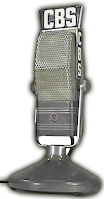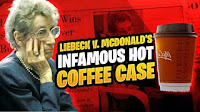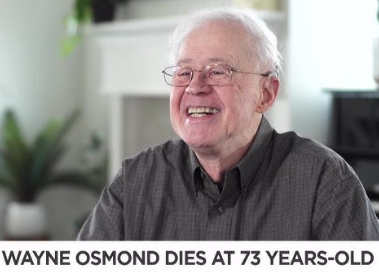➦In 1929...William Paley incorporated the Columbia Broadcast System.
 |
| William S Paley |
The origins of CBS date back to January 27, 1927, with the creation of the "United Independent Broadcasters" network in Chicago by New York talent-agent Arthur Judson. The fledgling network soon needed additional investors though, and the Columbia Phonograph Company, manufacturers of Columbia Records, rescued it in April 1927; as a result, the network was renamed "Columbia Phonographic Broadcasting System." Columbia Phonographic went on the air on September 18, 1927, with a presentation by the Howard Barlow Orchestra from flagship station WOR in Newark, New Jersey, and fifteen affiliates.
Operational costs were steep, particularly the payments to AT&T for use of its land lines, and by the end of 1927, Columbia Phonograph wanted out. In early 1928, Judson sold the network to brothers Isaac and Leon Levy, owners of the network's Philadelphia affiliate WCAU, and their partner Jerome Louchenheim. None of the three were interested in assuming day-to-day management of the network, so they installed wealthy 26-year-old William S. Paley, son of a Philadelphia cigar family and in-law of the Levys, as president. With the record company out of the picture, Paley quickly streamlined the corporate name to "Columbia Broadcasting System". He believed in the power of radio advertising since his family's "La Palina" cigars had doubled their sales after young William convinced his elders to advertise on radio. By September 1928, Paley bought out the Louchenheim share of CBS and became its majority owner with 51% of the business.

During Louchenheim's brief regime, Columbia paid $410,000 to A.H. Grebe's Atlantic Broadcasting Company for a small Brooklyn station, WABC (no relation to the current WABC), which would become the network's flagship station. WABC was quickly upgraded, and the signal relocated to a stronger frequency, 860 kHz. The physical plant was relocated also – to Steinway Hall on West 57th Street in Manhattan. It was where much of CBS's programming originated. Other owned-and-operated stations were KNX in Los Angeles, KCBS in San Francisco (originally KQW), WBBM in Chicago, WCAU in Philadelphia, WJSV in Washington, D.C. (later WTOP, which moved to the FM dial in 2005; the AM facility today is WFED, also a secondary CBS affiliate), KMOX in St. Louis, and WCCO in Minneapolis. These remain the core affiliates of the CBS Radio Network today, with WCBS (the original WABC) still the flagship, and all except WTOP and WFED (both Hubbard Broadcasting properties) owned by CBS Radio. By the turn of 1929, the network could boast to sponsors of having 47 affiliates.
Paley moved right away to put his network on a firmer financial footing. In the fall of 1928, he entered into talks with Adolph Zukor of Paramount Pictures who planned to move into radio in response to RCA's forays into motion pictures with the advent of talkies. The deal came to fruition in September 1929: Paramount got 49 percent of CBS in return for a block of its stock worth $3,800,000 at the time. The agreement specified that Paramount would buy that same stock back by March 1, 1932 for a flat $5,000,000, provided CBS had earned $2,000,000 during 1931 and 1932. For a brief time there was talk that the network might be renamed "Paramount Radio", but it only lasted a month – the 1929 stock market crash sent all stock value tumbling. It galvanized Paley and his troops, who "had no alternative but to turn the network around and earn the $2,000,000 in two years.... This is the atmosphere in which the CBS of today was born." The near-bankrupt movie studio sold its CBS shares back to CBS in 1932. In the first year of Paley's watch, CBS's gross earnings more than tripled, going from $1,400,000 to $4,700,000.
The extraordinary potential of radio news showed itself in 1930, when CBS suddenly found itself with a live telephone connection to a prisoner called "The Deacon" who described, from the inside and in real time, a riot and conflagration at the Ohio Penitentiary; for CBS, it was "a shocking journalistic coup". Yet as late as 1934, there was still no regularly scheduled newscast on network radio: "Most sponsors did not want network news programming; those that did were inclined to expect veto rights over it." There had been a longstanding wariness between radio and the newspapers as well; the papers had rightly concluded that the upstart radio business would compete with them on two counts – advertising dollars and news coverage. By 1933, they fought back, many no longer publishing radio schedules for readers' convenience, or allowing "their" news to be read on the air for radio's profit. Radio, in turn, pushed back when urban department stores, newspapers' largest advertisers and themselves owners of many radio stations, threatened to withhold their ads from print. A short-lived attempted truce in 1933 even saw the papers proposing that radio be forbidden from running news before 9:30 a.m., and then only after 9:00 p.m. – and that no news story could air until it was twelve hours old.

In the fall of 1934, CBS launched its independent news division, shaped in its first years by Paley's vice-president, former New York Times man Ed Klauber, and news director Paul White. Since there was no blueprint or precedent for real-time news coverage, early efforts of the new division used the shortwave link-up CBS had been using for five years to bring live feeds of European events to its American air.
A key early hire was Edward R. Murrow in 1935; his first corporate title was Director of Talks. He was mentored in microphone technique by Robert Trout, the lone full-timer of the News Division, and quickly found himself in a growing rivalry with boss White. Murrow was glad to "leave the hothouse atmosphere of the New York office behind" when he was dispatched to London as CBS's European Director in 1937, a time when the growing Hitler menace underscored the need for a robust European Bureau. Halberstam described Murrow in London as "the right man in the right place in the right era".
Edward R. Murrow pictured with CBS' London-based D-Day team. Front row (left to right): Bill Downs,
Charles Collingwood, Gene Ryder, Charles Shaw. Back row (from left): Larry LeSueur,
Edward R. Murrow, Richard C. Hottelet, Bill Shadel.
Murrow began assembling the staff of broadcast journalists – including William L. Shirer, Charles Collingwood and Eric Sevareid – who would become known as "Murrow's Boys". They were "in [Murrow's] own image, sartorially impeccable, literate, often liberal, and prima donnas all". They covered history in the making, and sometimes made it themselves: on March 12, 1938, Hitler boldly annexed nearby Austria and Murrow and Boys quickly assembled coverage with Shirer in London, Edgar Ansel Mowrer in Paris, Pierre Huss in Berlin, Frank Gervasi in Rome and Trout in New York. The News Round-Up format was born and is still ubiquitous today in broadcast news.


















































